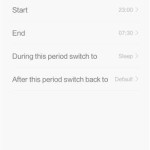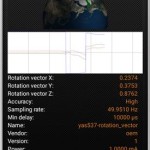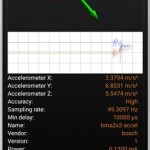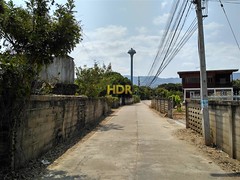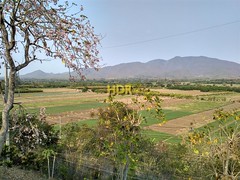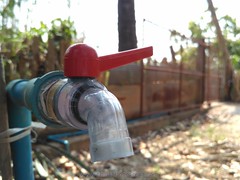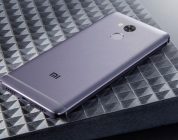Redmi 3 Mini is a phone we can easily recommend to those looking for a mobile in the $125-175 ballpark
The Redmi 2 is one of our favorite phones from 2015. It is one of the few China phones left with a 4.7″ display, it’s at a nice price point and all around the components are very good for its class.
Now refreshing the Redmi 2 is redthe Xiaomi Redmi 3 Mini (R3). They’ve made a lot of changes, and mostly for the better. For a full comparison to what’s changed, you can check out this post.
Xiaomi Redmi 3 Mini review style and build
The R3 is very similar looking to it’s big brothers, Redmi Note 3 and Redmi Note 3 Pro. The mostly aluminum backpiece has cleverly disguised, slightly off color plastic, at the top and bottoms. The contrast and lines look very nice and add classy character to the phone.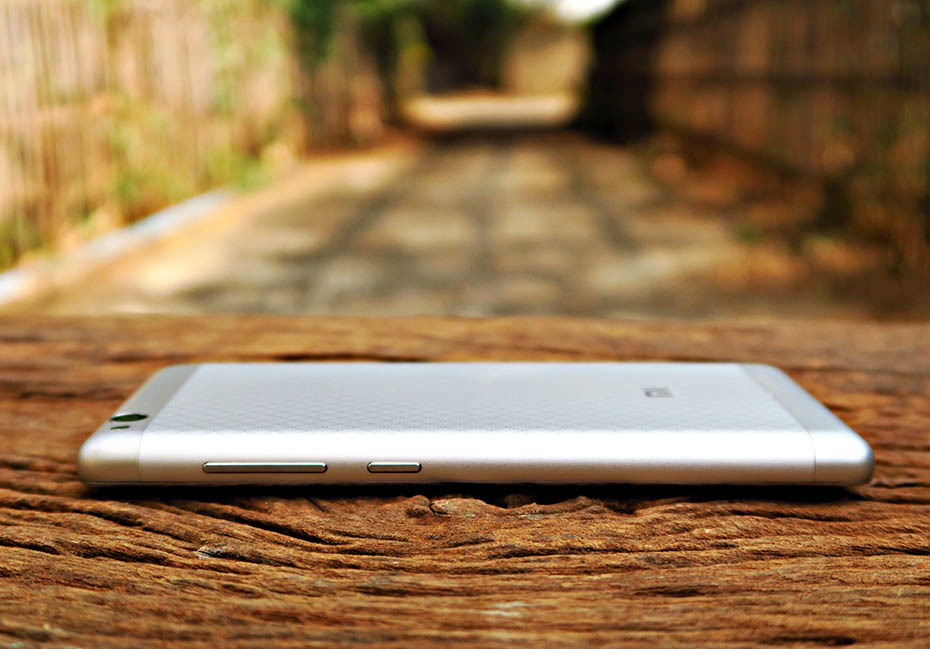
There are a couple of different backpiece styles: one is the “Fashion”, which has a textured diamond pattern on the backpiece, the other is the “Classic” style without the diamond pattern. Both styles look very good and it will depend on your taste.
The R3 is well built, with no creaks or loose spots. It’s also got some decent heft to it.
There is no backlight for the capacitive buttons, but for us this is no problem, and actually the first thing we do when turning on a new mobile phone with capacitive button backlights is to disable them.
- Redmi 3 / Redmi 2
- Clear case + glass
- Clear case + glass
Thankfully, the phone is very square, with slight rounds at the corners and soft rounds from the front to the back. The 4100mAh battery is built-in, but can be replaced in the future without too much issue if you plan on having the R3 for awhile to come.
Xiaomi Redmi 3 Mini OS
The OS on the R3 is Android 5.1.1 overlayed with MIUI 7.1. Snapdragon 616 is easily powerful enough to push 720P, Android is smooth, with butter system transitions and animations. We experienced no force closes or issues with any apps during our testing period.
www.GearBest.com
We installed Google Play with the easy to use Google Installer 2 (download). It’s a very straightforward process and doesn’t require root or any type of mods.
MIUI is built from the ground up to accept the install of Google Framework, Services, Accounts, and Store. Once those are on the phone, Google will automatically update all of these to the latest versions (see screenshots) and sync all.
- Developer options
- Profiles options
- Quick tiles
- Profiles
- Auto profile change
- Google Play Store
- Play services update
MIUI employs a very nice profile system, which allows you to set as many profiles as you wish, with settings such as when to clean memory, brightness, sleep mode, WLAN, networks, vibrate, bluetooth, sync and GPS. Smartly, there’s an option to auto-switch different profiles based on time of day.
There’s a guest mode which allows with a single tap to hide messages, notes, photos, settings, and incoming calls. .There’s also a child mode which allows you to enable only certain apps for use.
MIUI also allows installing of themes which can change the style of many aspects of the phone, including boot animation, quick tiles, settings style, fonts, shut down animations, icons, and wallpapers.
In the quick tiles we have a the standard array of settings, including a DND (do not disturb) tile and reading-mode tile.

big.LITTLE
The standard version of R3 is 2GB/16GB. Storage left for the user on the R3 is 11GB. For those who require more space, the R3 also allows us to use a TF SD instead of a 2nd SIM. This is a big plus, and we’re glad to see Xiaomi giving us the option.
Xiaomi Redmi 3 Antutu benchmarks performance
The Snapdragon 616 MSM8939 v2 employs 4-core Cortex-A53 [email protected] + 4-core [email protected], and the Adreno-405 GPU. This is a big bump up in performance in comparison to the Redmi 2 Prime.
The CPU cores are being used in a big.LITTLE fashion, when there is very light load, the four 1.21GHz cores stay at their base frequency of 800MHz, and two of the 1.5GHz cores at 960. As load increases, the 1.5GHz CPUs will kick up their juice to handle the higher-load processes, while the four 1.21GHz cores continue to handle background and lighter load processes. It’s a very efficient system which provides great performance and maximum battery efficiency.

- Xiaomi Redmi 3 Antutu 6.0.4: 34,345k (when aggressively throttled: 19k)
- Xiaomi Redmi 3 Antutu 5.7.3: 35,924 with a 3D score of 9k
- Redmi 3 Geekbench: 718 (single) / 3120 (multi)
- Redmi 3 PCMark: 3644
- Redmi 3 3DMark: 457 (ES3.0)
These scores were achieved in <80f/27c. Once ambient temperatures rise above this, while running intensive benchmarks, the R3 begins to throttle the CPU by about 30%. When ambient temperatures hit 86f/30c the R3 begins to aggressively throttle the CPU during benchmarks, bringing Antutu 6.0.4 to 19k.
Note that general Android operation remains smooth in high ambient temps, and may not be throttling at all in the temps which we see lower scores in intensive benchmarks. The GPU appears to not be throttling during intensive benchmarking even in high ambient temperatures (see GPU scores in screenshots).
- Geekbench
- PCMark
- 2DMark Slingshot
- GPU not throttled
- Antutu 6.0.4
- Antutu 5.7.3
A short test playing Dead Effect 2 had us scoring an even 30fps with settings on extreme.

Xiaomi Redmi 3 TF SD support
The R3 thankfully supports TF SD cards up to 128GB, though note that this will limit you to single SIM. This may affect some people, but the majority of users should be fine with it.
Xiaomi Redmi 3 display LCD
The display on the R3 is OGS IPS 5.0″@720P, which gives us a PPI of 293. It’s not retina, but on a 5.0″ display looks quite good and we get the added bonus of significantly better battery life.
The display used has very good color without being oversaturated. Thanks to OGS technology, our fingers are right up against the display. Extreme viewing angles produce very little change to color and contrast, and all typical viewing angles have color and contrast remaining perfect.
Xiaomi Redmi 3 components and sensors
- WiFi: Qualcomm. Excellent. Maintaining a stable, fast connection with a $20 home router and with a cinderblock wall batween the router and the phone at 145ft/44m
- OTG: Working with some issues (keyboard okay, bluetooth mouse okay, external USB TF SD okay, generic gamepad powered but OS and apps not responding)
- GPS: Very good. A cold lock was achieved within seconds. The R3 maintained high-20’s to mid-30’s on five to six satellites at all times
- external speaker: Very good. Speaker loudness is beyond adequate for videos, music and hands-free calls, and maintains solid clarity at maximum volumes
- bluetooth: Qualcomm. Working without issue (tested file transfer and BT speaker)
- FM: Qualcomm. Working without issue (tested local FM radio)
- compass: Yamaha yas537. Working without issue
- gyroscope: Yamaha yas537. Working without issue
- rotation vector: Yamaha yas537. Working without issue
- linear acceleration: Yamaha yas537. Working without issue
- gravity: Yamaha yas537. Working without issue
- flashlight: White. Bright 950 lux. Single-LED. Working without issue
- accelerometer: Bosch bma2x2. Working without issue
- light sensor: Liteon. Working without issue
- proximity sensor: Liteon. Working without issue
- infrared: Working without issue
- Compass
- Gravity sensor
- Linear acceleration
- Rotation vector
- Accelerometer
- IR Blaster detection
Xiaomi Redmi 3 camera
With a steady hand, or in very good lighting, images from this camera are impressively sharp across the frame
The rear camera in the R3 is made by O-film and carries the Samsung S5K3L8 sensor. This is Samsung’s newest 13MP sensor and incorporates ISOCELL technology. It is a true 13MP on a 1/3.06″ die, which makes the pixels 1.12μ (1/1000mm).

I found it difficult to take sharp images in anything other than bright daylight. The reason for this is that the stock camera app tends to choose as low ISO as possible, which often means too slow a shutterspeed for handheld shots.
One way around this is to shoot in manual mode and raise ISO sensitivity so the camera can use a faster shutterspeed to minimize handshake effects.
With a steady hand, or in very good lighting, images from this camera are impressively sharp across the frame without applying aggressive jpg sharpening. So sharp that it appears to significantly exceed sharpness in the MTK Redmi Note 3 which carries the 13MP ISOCELL Samsung S5K3M2 sensor; but, this may come down to lens as opposed to the sensor.

Colors are very good without a fake oversaturated look.
The Redmi 3 Mini camera produces images well beyond adequate for social sharing and in good light are good enough to make largish 11×14″ prints.
In low-light without flash, no 1/3.06″ sensor in the world, or 1/2.3″ standalone compact for that matter is going to give us great IQ, but I find the images to be passable for social sharing, with low-light images being not sharp, but noise well-cleaned.
In good light, this is a phone camera that can replace your standalone camera for many situations.
The front camera is made by O-film as well and carries the true 5MP Omnivision OV5670 sensor, which is the same sensor held by Redmi Note 3 and Redmi Note 3 Pro.
These pictures are SOOC (straight out of camera) with no edits other than a resize. Pictures were taken with the stock Redmi 3 camera. The crops are 100% crops from the full 13MP images.
Xiaomi Redmi 3 battery life
We made a guess in the preview that the Redmi 3 would hit about 10 hours– and so it did
Gone are the days where we need to settle for 4-5 onscreen hours. Many China brand mobiles have now taken a big leap and are offering a minimum of 3000mAh in most 5.5″ phones. Now Xiaomi has taken this one step further and fit a big, juicy 4000mAh battery in their 5.0″ Redmi 3.
Not only have they fit this mega-battery in the phone, they’ve managed to make the Redmi 3 thinner than Redmi 2 with its 2200mAh battery. An excellent feet, and in combination with the 720P and 5.0″ display should provide great onscreen times.

10h30m SOT
We made a guess in the preview that the Redmi 3 would hit about 10 hours– and so it did; in our standard battery test with the display at 140lux, running a 720P video over WiFi through YouTube, the Redmi 3 lasted 10 hours 30 minutes. Making a conservative estimate– with WiFi use over a 24 hour period, users should see about 8 hours onscreen time.

Xiaomi Redmi 3 battery charging
Charging of the Redmi 3 battery takes about 2 hours 30 minutes, with the phone charging from 3% to 90% in 2 hours. This is excellent news considering the huge capacity battery, and makes the Redmi 3 a Quick Charge mobile.

90% in two hours
Redmi 3@Gearbest
Xiaomi Redmi 3 frequency support
The R3 carries worldwide 2G GSM / 3G WCDMA and 4G LTE for most of Asia / UK / Euro.
- 2G: GSM 850/900/1800/1900MHz
- 3G: WCDMA 850/900/1900/2100MHz
- 4G: FDD-LTE 1800/2100/2600MHz
Xiaomi Redmi 3 summary conclusion
The Xiaomi Redmi 3 Mini has great battery life, slick styling, a compact body, excellent WiFi SNR, TD SD expansion support, and all-around solid components. This is a phone we can easily recommend to those looking for a mobile in the $125-175 ballpark.













